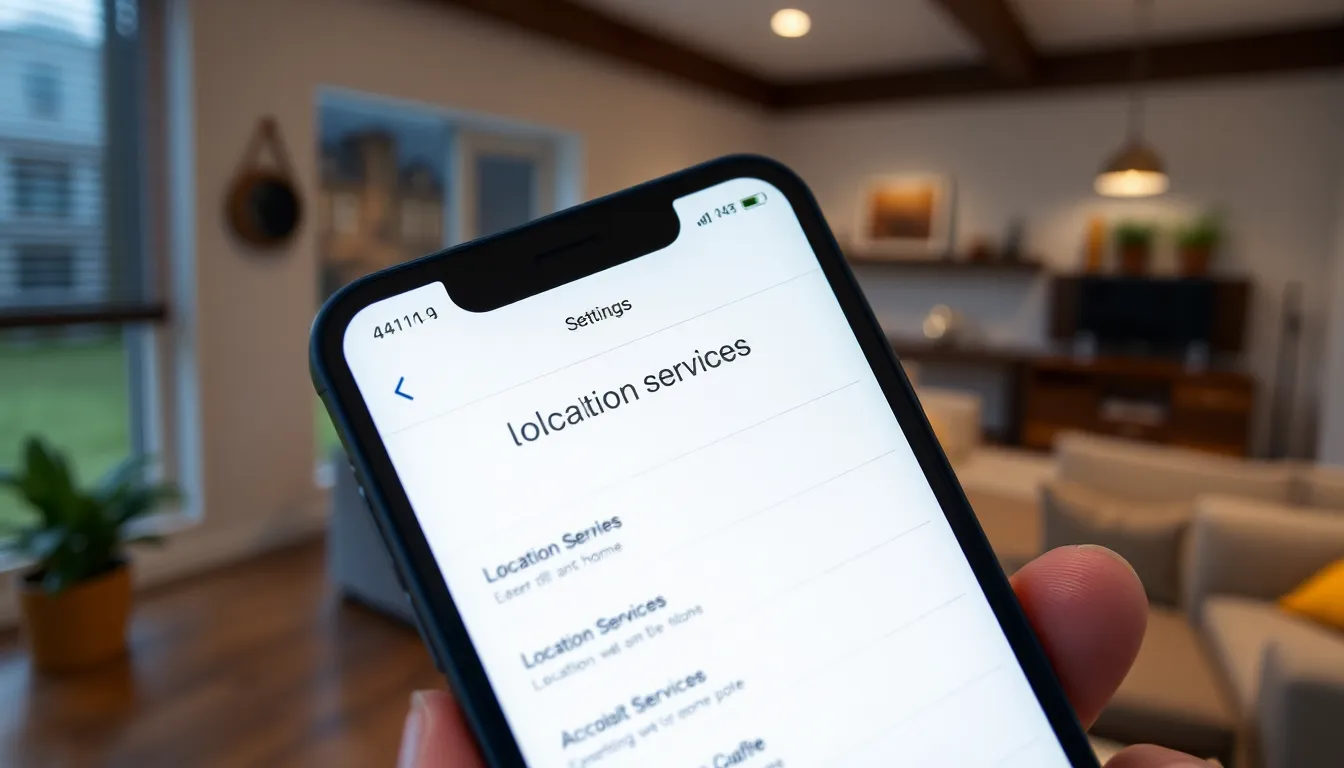Navigating the world with an iPhone is a breeze, but sometimes it feels like the Maps app has a mind of its own. Those unsolicited suggestions can be as annoying as a backseat driver who insists on giving directions. Whether it’s recommending a coffee shop you’ve already visited or suggesting a shortcut that’s anything but, it’s time to reclaim control over your map experience.
Table of Contents
ToggleUnderstanding Map Suggestions on iPhone
Map suggestions on iPhone offer users recommendations for destinations based on past behavior and current location. These suggestions help users navigate efficiently but can also become intrusive.
What Are Map Suggestions?
Map suggestions consist of location recommendations generated by the iPhone Maps app. These suggestions arise from user’s habits, frequently visited places, and recent searches. Examples include local restaurants, gas stations, or landmarks. The app’s algorithms analyze data to tailor suggestions, aiming to enhance navigation. While helpful for some users, these unsolicited prompts can feel overwhelming for others.
Benefits of Turning Off Map Suggestions
Disabling map suggestions brings several advantages. Users enjoy a more streamlined navigation experience without distractions. This change allows for a focus on specific routing, enhancing decision-making on the road. Privacy improves as less personal data is shared with the app. Additionally, the device gains improved performance when the app isn’t burdened with generating suggestions. Turning off these prompts promotes a more user-driven navigation experience, aligning with individual preferences.
How to Turn Off Map Suggestions on iPhone

Adjusting map suggestions on an iPhone can enhance user experience. Individuals can take several steps to disable unwanted suggestions.
Using the Settings App
Open the Settings app to start. From the main menu, scroll down to find Privacy & Security. Tap on Location Services, then scroll to System Services. Here, locate Significant Locations and toggle it off. This action will stop the iPhone from generating suggestions based on location history.
Disabling Location Services
Disabling Location Services altogether restricts all mapping features. Go to Settings, select Privacy & Security, then tap Location Services. Toggle the slider to off, and all apps will lose access to location data. Note that without location services, navigation features will also suffer, limiting map functionality.
Managing Privacy Settings
Managing privacy settings helps control personalized suggestions. In Settings, select Privacy & Security, and then tap on Apple Advertising. By toggling off Personalized Ads, users reduce data collection on preferences. Avoiding unnecessary suggestions can create a more personalized navigation experience.
Alternative Options for Map Usage
Exploring other navigation options helps users tailor their mapping experience. These alternatives can significantly enhance usability while addressing concerns around unsolicited suggestions.
Using Third-Party Navigation Apps
Utilizing third-party navigation apps offers distinct benefits. Google Maps and Waze provide user-friendly interfaces and detailed traffic data. Both apps allow users to set preferences, focus on specific routes, and avoid unwanted suggestions. Users can customize alerts and notifications based on personal preferences, reducing distraction during travel. Additionally, many of these apps integrate real-time data, ensuring users access the latest information for better route planning.
Customizing Apple Maps Settings
Adjusting Apple Maps settings customizes the navigation experience. Users can turn off frequent locations by navigating to the Settings app, then tapping on Privacy & Security, followed by Location Services. Selecting the Maps option allows users to manage tailored suggestions based on personal habits. Disabling options like “Show Parked Location” and “Traffic” can streamline the interface, minimizing clutter. These simple adjustments create a more personalized map experience, keeping it focused on what users truly want to see.
Common Issues and Troubleshooting
Users may encounter a few common issues while trying to turn off map suggestions on their iPhones. Addressing these challenges ensures a smoother experience with the Maps app.
Addressing Glitches in Settings
Sometimes, changes in settings don’t take effect immediately. Restarting the iPhone can resolve minor glitches and apply the new settings. Checking for software updates is crucial as updates often fix bugs related to settings not working correctly. After updating, revisit the Location Services settings to confirm Significant Locations are toggled off. Resetting location and privacy settings can also correct persistent issues. This action restores all settings to default, thus providing a clean slate for adjustments.
Re-enabling Map Suggestions if Necessary
If map suggestions are turned off but later desired again, users can easily re-enable them. Accessing the Settings app is the first step. Navigating to Privacy & Security, then selecting Location Services allows users to turn Significant Locations back on. Also, turning on Personalized Ads can help restore a more tailored experience in Maps, as personalization relies on location data. Following these steps ensures suggestions return, supporting users’ navigation preferences once more.
Turning off map suggestions on an iPhone can significantly enhance the navigation experience. By following the outlined steps users can regain control and tailor their app to better suit their preferences. This not only streamlines navigation but also boosts privacy and device performance.
For those who find Apple Maps suggestions intrusive there are alternative navigation apps available that offer more customization and flexibility. Users can explore these options to find the best fit for their travel needs.
Ultimately the choice to disable map suggestions empowers users to navigate on their terms. Whether opting for a simplified experience or exploring third-party apps the decision leads to a more enjoyable journey.


